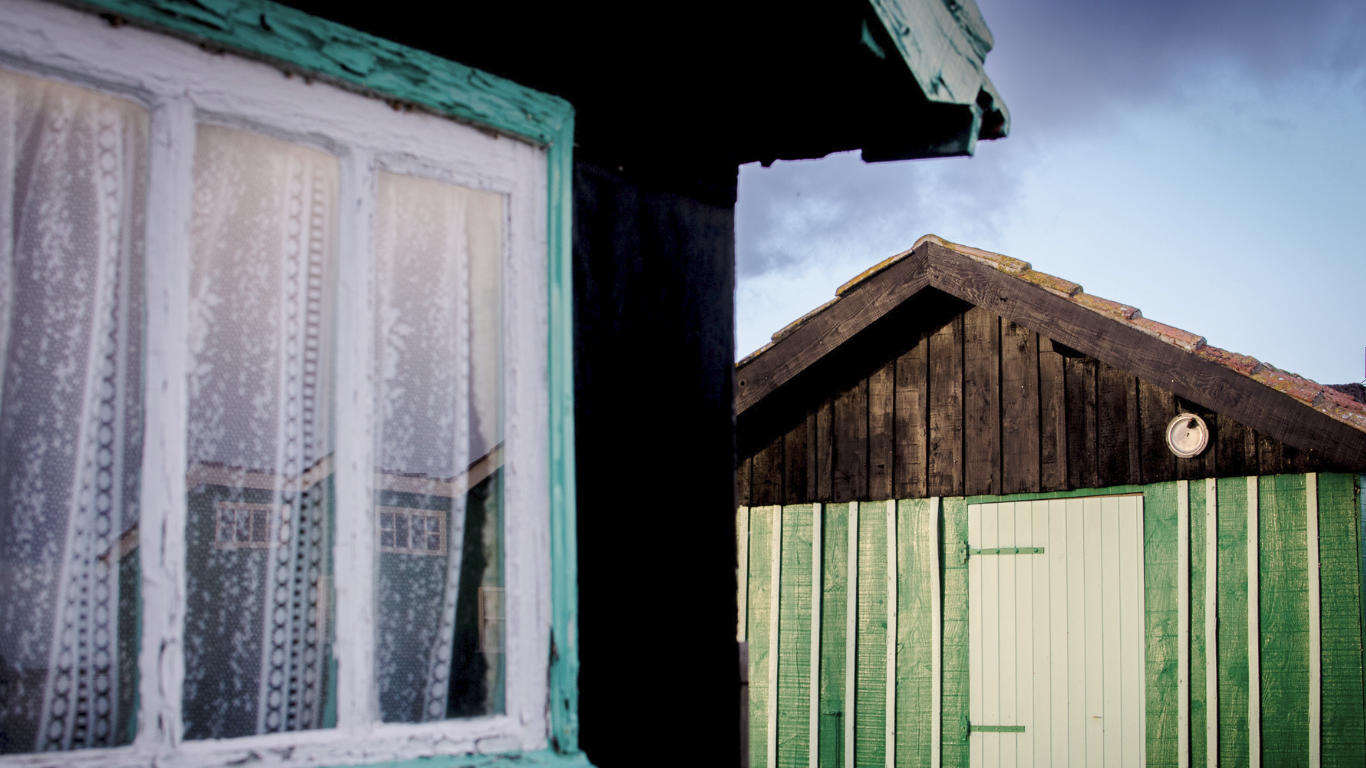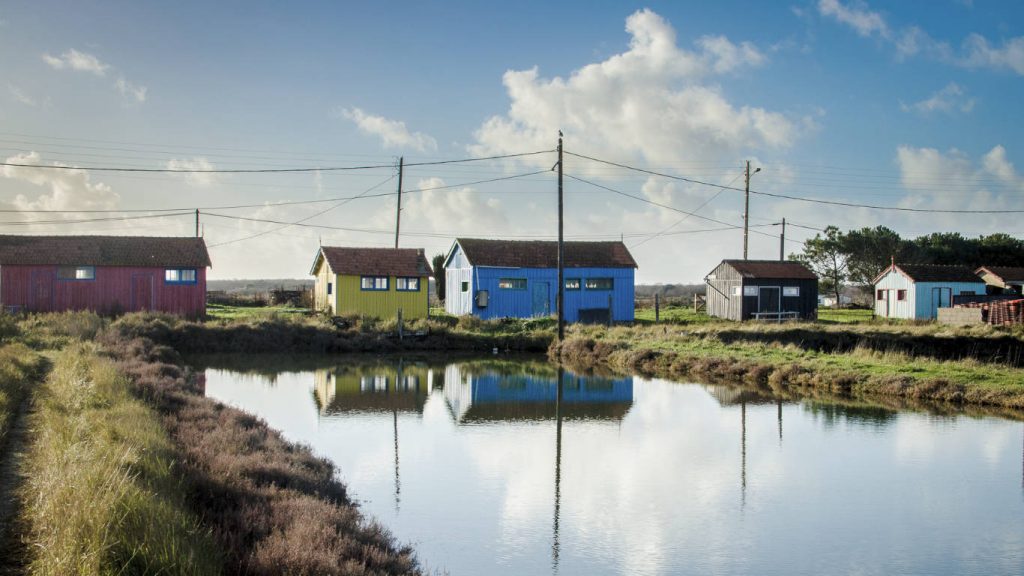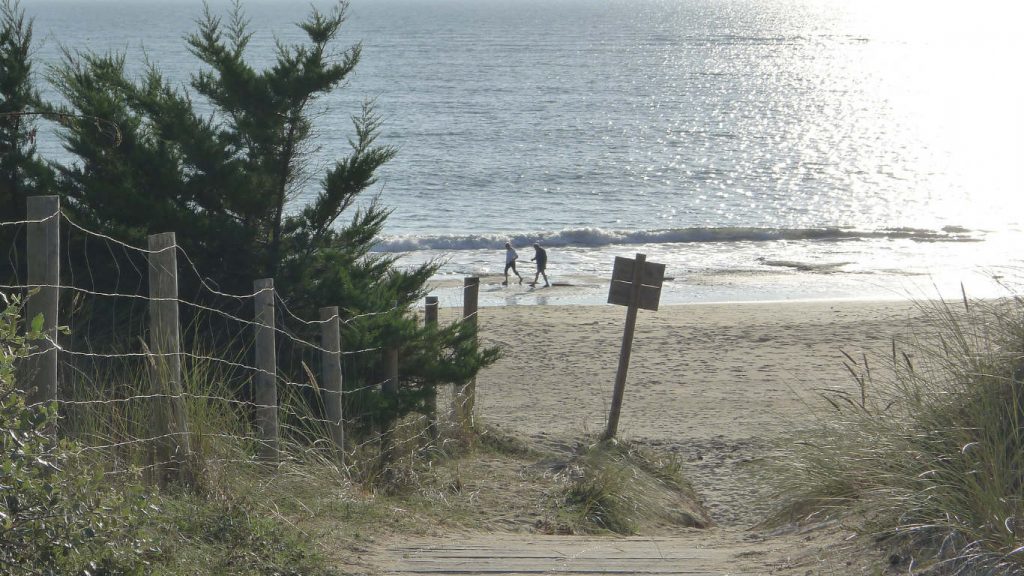
Île d’Oléron – discover this beautiful island
The scent of mimosa wafting on the breeze and mingling with those of the sea and salt – this is the emblematic bouquet of Ile d’Oléron.
Outside of the region, it is the lesser-known of the two big islands off the coast; Ile de Ré, with its starry visitors is more famous, but Ile d’Oléron is where the locals head to when they want a bit of island life.
It’s a lovely place. The celebrated French century writer Pierre Loti dubbed the island of Oléron ‘La Lumineuse’ for its light. The countryside is perfect for languid exploration by foot or bicycle, passing pretty waterways with their brightly coloured oyster boats bobbing in the water, and beside them oyster sheds of yellow, red, blue and green.

Stop for a while in one of the many picturesque villages then continue on your exploration, through forests and vineyards. Then there are the beaches – kilometre upon kilometre of clean soft sand, backed by dunes.
Ile d’Oléron is France’s largest island after Corsica and is 30 km long and 6 km wide. The main towns are the capital Saint-Pierre d’Oléron in the centre of the long island, Saint-George D’Oléron a little further north and Saint-Denis d’Oléron at the northern tip. Just south of Saint-Pierre is Dolus d’Oléron, on the east coast le Château d’Oléron and further south Saint Trojan-les-Bains.
With fishing a major industry on the island, the port towns are bustling places. La Cotiniere is the largest and definitely a place to visit. The catch is landed each day at 3.30pm and although you cannot go down to where it is unloaded, it’s a good time to visit. For oysters, head to Saint-Trojan, where you can feast on some of France’s best shellfish.
Major festivals
February:
Fête du Mimosa – the bright yellow plant is a symbol of the island and over a weekend, it is celebrated with music and carnival processions throughout the island. See our what’s on for this year’s date.
August:
Fête du Chenal d’Ors – see fleets of oyster and mussel boats plus tuck into lots of tastings.
Fête de Sel – a celebration of salt at the port des Salines, Grand Village Plage. See our what’s on for this year’s date
There are tourist offices all over the island. These are the main ones:
Ile d’Oléron et du Bassin de Marennes
Route du Viaduc
17560 Bourcefranc
Tel: 05 46 85 65 23
www.ile-oleron-marennes.com
Saint-Pierre d’Oléron
Tel: 05 46 47 11 39;
www.saint-pierre-oleron-tourisme.fr
Where to stay on Ile d’Oléron
There is plenty of choice from good hotels,to bed and breakfasts (chambres d’hôtes in French), gîtes, holiday villages and camping sites.
Getting there
By road
Ile d’Oléron, is reached by bridge (no toll) from Bourcfranc-le-Chapus on the mainland. There is no cycle lane on the bridge so take care. The bridge gets busy in the summer months, and traffic jams on Sundays are not uncommon.
It’s an easy 45km from the bridge to Saintes, which links to the A10 autoroute north to Paris and south to Bordeaux.
By water
Which also take cars, also go from Bourcfranc-le-Chapus, as well as from La Rochelle and Marennes. For information on boats visit www.inter-iles.com.
By train
Local trains run to Saintes, Rochefort and La Rochelle, and nearby Surgères connects with the TGV to Paris (three hours).
By air
The nearest airports are Rochefort (internal flights only) and the international airports of La Rochelle (45 km), Bordeaux (130 km) and Poitiers (150 km).
What to See and Do near Île d’Oléron
The Charente-Maritime is packed with things to see and do so you’re guaranteed plenty of attractions near Île d’Oléron. Here are a few suggestions…
The Citadel of Brouage at Hiers-Brouage on on the mainland has a similar timeline to that of the Citadel on Ile d’Oléron, and was built to protect this important stretch of the Atlantic coast. Its Halle aux Vivres (where the fort’s food was kept), has been restored and is particularly interesting with its brick arches on stone pillars. It is so large it could hold 720 barrels on the ground floor and 300 tonnes of wheat on the first floor.
The horseshoe-shaped Fort Louvois – called ‘Fort Boyard’s little brother’ – is at Bourcefrance-le-Chapus, at the mainland foot of the bridge. Louvois, also designed by Vauban, can be reached via a footpath which is underwater at high tide, or by boat (free in July and August). Opening times vary according to the month and season so it is best to check before you set off.
Bourcefranc-Le-Chapus, Marennes (home of the world-famous ‘green’ oyster) and historic Bruage all nestle at the mainland foot of the bridge, and are all worth seeing – especially Bruage for its dreamlike military ruins and now silted salt port, once ‘the most beautiful port in France’ and now two kilometres from the sea.
Photo 1 and Photo 3 by Kerarno / CC BY 2.0 image cropped; Photo 4 by bibliobess / CC BY 2.0 image cropped



